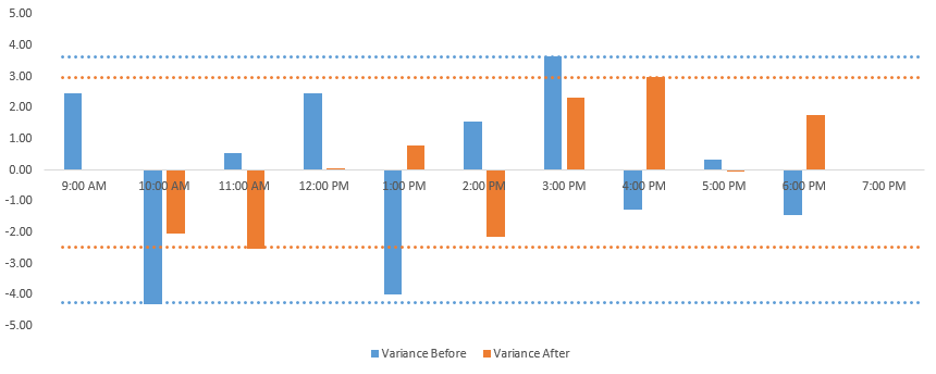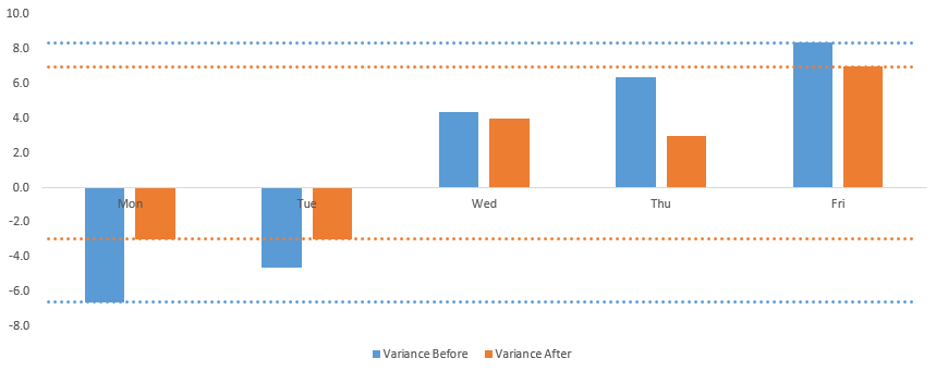Improve Service Level, Shrink, and Attrition by Giving Agents What They Want

Welcome guest contributor Jeremy Markey and coauthor Nathan Knight! Jeremy and Nathan each have a decades-long background in contact centers and share from their experience working with agents on the Workforce Engagement Team at Hunter Douglas, the leading manufacturer and marketer of custom window treatments in North America.
Hunter Douglas has been struggling to find our equilibrium with our working from home customer service agents, as with most organizations. As someone who primarily worked from home, for nearly 15 years prior, I recognize working from home isn’t all the bed of roses I expected it to be, when asked about it in polite company.
While conducting a focus group with our agents, one of my dogs made a mess in the corner of my office. I casually mentioned it and that I would take Jules to the vet shortly after the focus group. One of our agents commented “that must be nice to just be able to go.” It dawned on me, one of the greatest strengths of working from home is flexibility and we are denying our agents the ability to take advantage of it.
After putting together a proposal and getting approval, we initiated a pilot that would allow our agents to flex their schedule and take control of their breaks and lunches. Not only was the pilot incredibly popular, we improved our average speed of answer by 7%, our total shrink by 3%, and our annualized attrition by 8%.
Why did flexibility work?
First, we executed! Without execution no plan is worth its salt.
Nassim Nicholas Taleb talks about antifragility. When asked what the properties of antifragility are, most people describe durability by outlining how something is harder to break. Antifragility isn’t requiring more force before something breaks, it is something that gains strength from the force that is trying to break it. To paraphrase Mr. Taleb a candle is fragile to the wind, a fire is strengthened by the wind. Where a candle is fragile to the wind a fire is antifragile to it.
Contact centers are traditionally fragile to randomness. When contacts come in, outages, weather, and the choices our agents make are all random with a level of predictability based on past patterns. We’ve tried for decades to make ourselves durable to the randomness, yet no system has ever fully succeeded. Those of us running these contact centers often feel like we’re changing the tire of the car while driving down the interstate just trying to hold it together. The flexibility, that is outlined below, has allowed us to gain strength from or become antifragile to the randomness of agent choices.
As we all know, the purpose of scheduling shifts/breaks/lunches is to have the right amount of skilled, capable people ready to handle the workload as it comes in. We felt if we could develop a system that allowed us to achieve the same results while giving our agents the power, we couldn’t lose. By steering into that randomness, the hope was that our break/lunch patterns would become more diversified and people who flexed their schedule would add hours when we were busiest and take hours away when we were slowest. IT WORKED!
Break/Lunch Flexibility
We allow our agents to take break/lunch almost anytime they want within a simple set of limitations. Our overall limitations are as follows: (California, Canada, and the like need additional limitations to fit local laws)
- Lunch must meet or exceed 30 minutes
- No break/lunch in the first/last hour of the day
- At least 2/3rds of our staff in a productive state
- Do not take them during scheduled events (meetings, one on ones, etc)
The graph below shows optimal break/lunch variance both before and after flex.
- The Y axis is quantity of people (FTE) over or under the optimal amount of staff on break or lunch
- The X axis is hours of the day (HOOP)
- We reduced our variance to optimal break/lunch usage from 7.98 FTE to 5.5 FTE

Schedule Flexibility
We allow our agents to request to move any amount of hours from one day in a given week to another day or days within the same week within a similarly simple set of limitations: (California, Canada, and the like need additional limitations to fit local laws)
- May not increase/decrease total scheduled hours in a given week
- Requests are reviewed 3 weeks out for approval and can be entered up to 1 year out
The below graph shows staff alignment with workload before and after flex.
- The Y axis is FTE over/under our required staff to hit our ASA target
- The X axis is the days of the week
- We reduced our variance to optimal staffing from 15 FTE to 10 FTE

Flex Specific Metrics
Schedule Flex Approval Rate
- Expectation: 85% or better
- Actual: 98%
- Calculation: Approved Requests / Valid Requests
Agent Utilization
- Expectation: 80% or better
- Actual: 82%
- Calculation: Productive Hours / In Center Hours
Agent Availabiliity
- Expectation: 95%
- Actual: 96%
- Calculation: Productive Hours / (In Center Hours – Exceptions)
Lessons Learned
Adherence: Using the traditional adherence model we found our agents would skirt the system, skip or reduce their break or lunch, cut calls short, or manipulate their phone state to make good metrics, or give up and just go whenever they wanted anyway. Using flex none of that manipulation is necessary and we saw a material decline in these undesirable behaviors.
Creativity: Agents will be creative on what they ask for in schedule flexibility, we learned to be open to it. As long as the request doesn’t make service worse as a whole, even trades where one day is a bit worse, but the other day is a bit better, it’s probably a good trade. Once we found people asking for a specific flex regularly, we’d look to make it permanent for them. Now we have some quite odd-looking shifts that no one would sign up for but are better for the agent and better for Hunter Douglas.
Saying Yes: We challenged ourselves to say “YES” or “LETS TALK” to any request. Once we got on the phone or chatted with the agent, we almost always were able to come up with a middle ground that worked for everyone. Because of this tactic we were able to approve 98% of all requests made which had a significant impact on our agents and on our performance.
Arbitrary Rules: Occasionally management would ask to impose an arbitrary rule, in each case this was due to a horns/halos effect where the agent was a poor performer in another area. Since the flexibility requests they had been making were benefiting the company we defended against those rules and have been successful keeping flex pure to the original intent.
Conclusion
Flex has been a boon for Hunter Douglas, our agents, and our management. Supervisors have remarked how this is much easier to understand and explain, they don’t feel like they have to chase agents around to do their work, and the bandwidth impact to maintain results is significantly less than the old traditional adherence model.
A few months after flex went live and our performance was at an all-time high, I was conducting a focus group with agents asking how flex has been for them, and one agent shared a heartfelt story. She shared for nearly ten years she hasn’t been able to take a vacation. Either her health was bad, her family’s health was bad, or other family responsibilities for her adult children required her to take time away from work. She said (and has shown) she’s always been more than willing to put in the work and help out, just the system of sick time, paid time off, and trading schedules meant her only real solution to take care of her family was to spend her entire time off balance doing it. This year, she said she is going to be able to take a vacation!
I was pretty emotional hearing her experience. The systems we create can liberate people or get people to feel like a fish being judged for its inability to climb a tree. Let’s be deliberate with which kind of systems we’re creating.
For the curious, Jules is doing fine!
Level Up Your Contact Center!
Would you like to see the same improvements in employee satisfaction and productivity? Vertical can help! We’ll enable innovative Workforce Management solutions like this for your contact center. Let Vertical set you up with similar custom reporting, scheduling, and productivity tools that are just right for your business.
Vertical is the expert when it comes to designing a better communications strategy, whether it’s building a more effective contact center with an exceptional customer experience or taking your whole office to the cloud in this remote and hybrid work environment. We’ve helped hundreds of businesses implement industry-leading voice, messaging, and video solutions that enable employees to do their best work from anywhere.



